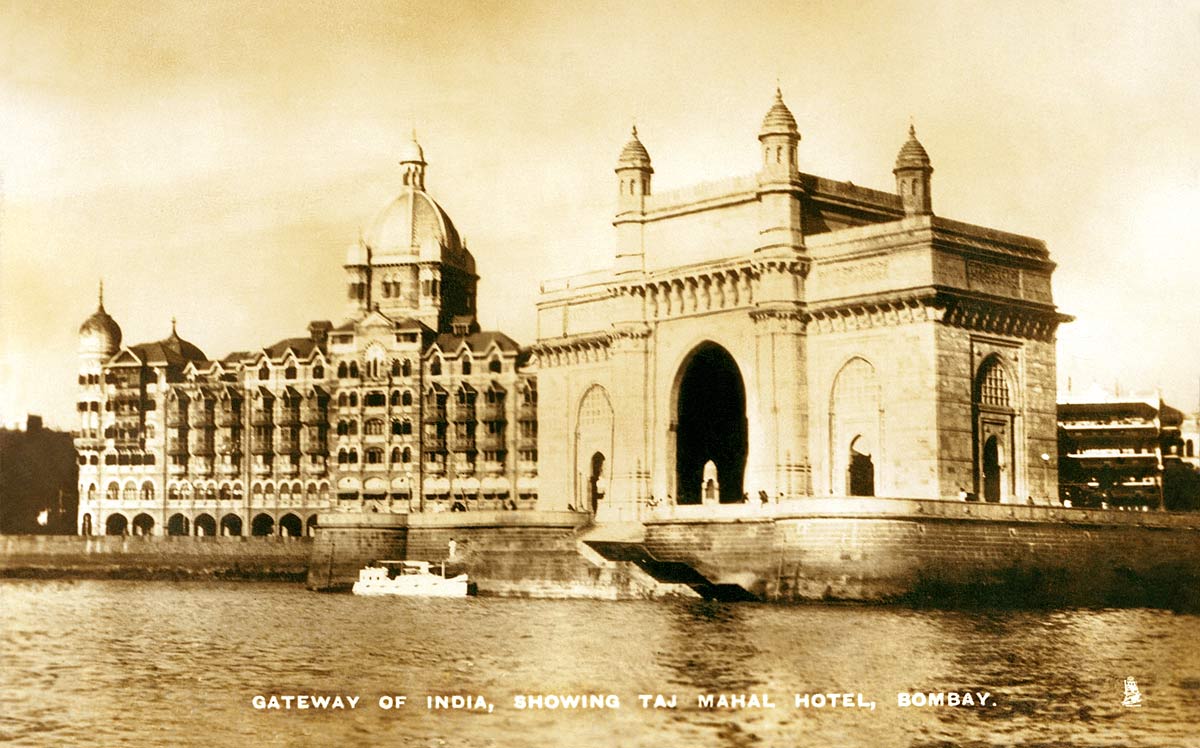A rare Tuck's "Real Photograph" postcard of India, which they seem to have offered in response to the market around the 1930s. The Mexican writer Octavio Paz describes the scene in 1951 when he first approached Bombay by ship:
"An arch of stone appeared, planted on a dock and crowned with four little towers in the shape of pine trees. Someone leaning on the railings beside me exclaimed, "The Gateway of India!" He was an Englishman, a geologist bound for Calcutta. We had met two days before, and I had discovered that he was W. H. Auden's brother. He explained that the arch was a monument erected to commemorate the visit of King Geroge V and his wife, Queen Mary, in 1911. It seemed to me a fantasy version of the Roman arches: later I learned it was inspired by an architectural style that had flourished in Gujarat, an Indian state, in the sixteenth century. Behind the monument, floating in the warm air, was the silhouette of the Taj Mahal Hotel, an enormous cake, a delirium of the fin-de-siecle Orient fallen like a gigantic bubble, not of soap but of stone, on Bombay's lap." (Harvest, p. 8)

